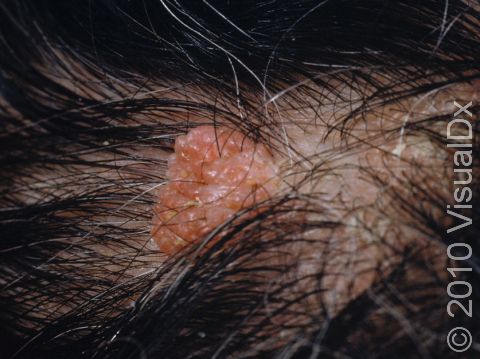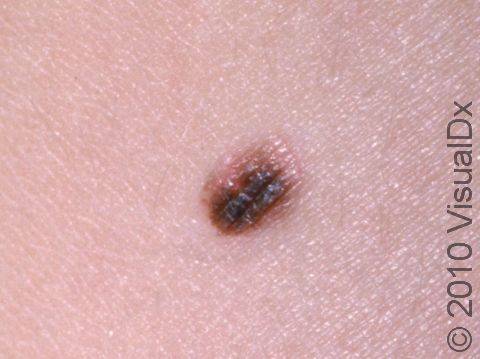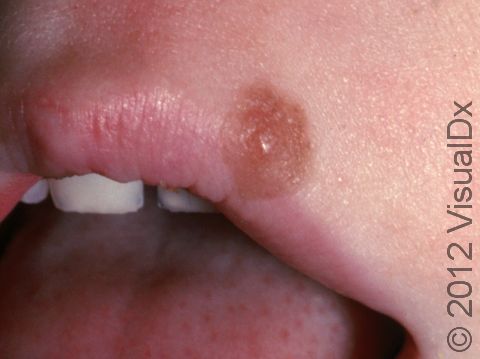Mole (Nevus)
Nevus is the medical term for a mole. Moles (nevi) are noncancerous (benign) and can present at birth (congenital) or develop after birth (acquired). Some moles are raised and some are flat. Moles can range in color from skin-colored to pink, tan, brown, black, or even blue. Regardless of these differences, all moles are made up of collections of the pigment-producing cells of the skin (melanocytes). After moles stop growing, they may persist or they may become smaller later in life. Sun exposure and family tendency (heredity) play a role in the development of moles. Moles may sometimes become inflamed or irritated by friction from rubbing or contact with rough clothing or by other types of injury. Common acquired moles are benign and are considered normal.
Who's At Risk?
Moles may occur in people of any age, race / ethnicity, and sex, but they most commonly appear between the ages of 10 and 30 years. Individuals with lighter skin colors are more likely to develop moles.
Signs & Symptoms
- Moles may occur anywhere on the body, including the nails, palms, and soles.
- Moles may be raised or flat.
- The color of moles may vary from pink to skin-colored, to brown, but they may be darker in people with darker skin colors.
- Noncancerous (benign) moles are usually symmetrical, have smooth borders and are uniform in color, and they are generally smaller than the size of a pencil eraser (6 mm).
Self-Care Guidelines
- Help your child avoid skin exposure to sunlight, especially during peak sun hours (10 AM to 3 PM). Also help them apply high sun protection factor (SPF) sunscreen and ensure they wear protective clothing when exposed to harmful ultraviolet (UV) light.
- Monthly self-examination of the skin is helpful to detect new lesions or changes in existing lesions on your child. Note the ABCDEs of melanoma lesions:
A – Asymmetry: One half of the lesion does not mirror the other half.
B – Border: The borders are irregular or vague (indistinct).
C – Color: More than one color may be noted within the mole.
D – Diameter: Size greater than 6 mm (roughly the size of a pencil eraser) may be concerning.
E – Evolving: Notable changes in the lesion over time are suspicious signs for skin cancer.
Treatments
Benign moles do not require treatment, although they may be surgically removed if they are cosmetically bothersome or if they become inflamed or irritated.
Visit Urgency
Seek medical evaluation for your child if you are unsure about the nature of a mole, if you note changes within a mole, or if a mole becomes irritated or painful. Additionally, seek medical evaluation if any of the ABCDEs are present.
Trusted Links
References
Bolognia J, Schaffer JV, Cerroni L. Dermatology. 4th ed. Philadelphia, PA: Elsevier; 2018.
James WD, Elston D, Treat JR, Rosenbach MA. Andrew’s Diseases of the Skin. 13th ed. Philadelphia, PA: Elsevier; 2019.
Kang S, Amagai M, Bruckner AL, et al. Fitzpatrick’s Dermatology. 9th ed. New York, NY: McGraw-Hill Education; 2019.
Paller A, Mancini A. Paller and Mancini: Hurwitz Clinical Pediatric Dermatology. 6th ed. St. Louis, MO: Elsevier; 2022.
Last modified on June 14th, 2024 at 12:19 pm

Not sure what to look for?
Try our new Rash and Skin Condition Finder



